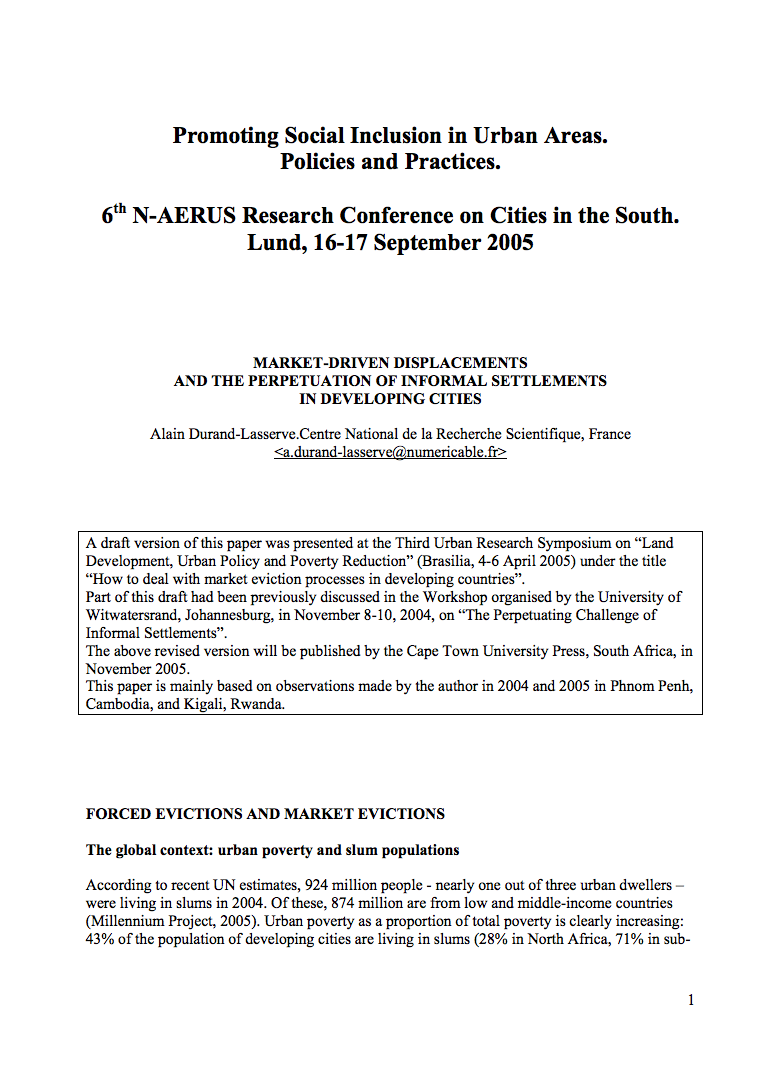Resource information
According to recent UN estimates, 924 million people - nearly one out of three urban dwellers – were living in slums in 2004. Of these, 874 million are from low and middle-income countries (Millennium Project, 2005). Urban poverty as a proportion of total poverty is clearly increasing: 43% of the population of developing cities are living in slums (28% in North Africa, 71% in sub-
1
Saharan Africa, 42% in Asia and 32% in Latin America) (Lopez Moreno, 2003 and UN-Habitat, 2003 b). By 2020, this figure is expected to increase to 1.5 to 1.7 billion, depending on estimates. Recent estimates (Cohen, 2004) suggest that about 2.8 billion will need housing and urban services by 2030. The slum population is expected to increase from 32% of the world population in 2001, to about 41% in 2030.
So far, no satisfactory solution for addressing the challenge of slums has been found. Conventional responses are usually based on the combination of three main types of intervention: (i) in situ upgrading in existing informal settlements; (ii) evictions followed by resettlement on serviced sites on the periphery of cities; (iii) the preventive provision of low-cost serviced plots for housing (UN-Habitat, 2003 b). These responses have achieved limited results. Despite some major successes at national level where political will and continuity, economic development and mobilization of resources in sufficient quantities have made possible the implementation at national level of innovative policies for housing the poor (South Africa, Brazil, Tunisia, etc.), scaling up remains a major problem. Most slum policies are simply treating the symptoms and cannot be considered as structural and sustainable policies. The Millennium Development Goal is to achieve a significant improvement in the lives of 100 million slum dwellers by 2020 (Millennium Project, 2005). This target would represent only 6% of the slum population in 2020.

